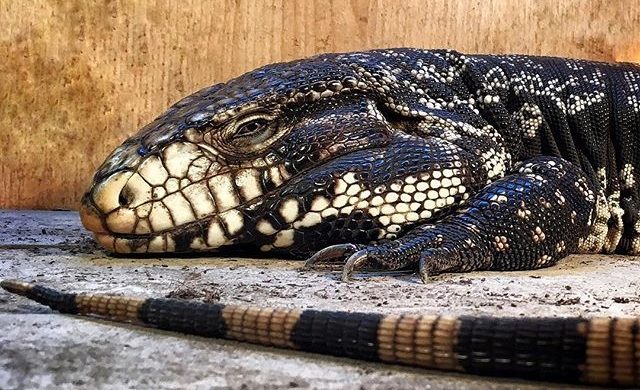Texas is facing a major threat in the form of an invasive species. This dangerous fauna is native to South America and was first spotted in the Florida Everglades. Now found in our state, as well as Georgia, South Carolina, Alabama, and Louisiana, the Argentine black-and-white tegu lizard, or Salvator merianae, is causing concerns for many. Why are tegu lizards coming to Texas?
The Argentine black-and-white tegu is a non-discriminating eater, gobbling everything it can reach including crops, gardens, and even smaller animals. They are also quite hardy and can survive weather fluctuations easily. Adult males can reach up to 4.5 feet in length at maturity; the females are typically smaller. Healthy tegu lizards can live for up to 20 years in the wild. They are usually docile but can be aggressive when feeling threatened; due to strong jaws, their bite can be painful and damaging. By comparison, the force of a tegu bite is stronger than that of a dwarf caiman.

Photo: @sandi.zelko via Twenty20
It is believed these non-venomous lizards flourished in Florida after escaping captivity or upon release into the wild. It is illegal to own Argentine black-and-white tegus as pets, but the market still thrives. Noted for their unusually high intelligence, tegus can be house-broken. Additionally, they can run at high speeds. If this animal is spotted in your area, please report it to the local wildlife control department immediately for capture and release. A secondary resource is www.texasinvasives.org.

Photo: envato elements
Texas is battling multiple invasive species. These plans and animals are non-native (or alien) to the ecosystem under consideration, and their introduction causes economic or environmental harm or harm to human health. Invasive species cost the United States about $137 billion annually. Other things to keep an eye out for in Texas are the Tawny Crazy Ant, the Emerald Ash Borer beetle, Lionfish, Apple Snails, Onionweed, and Floating Heart plants.



